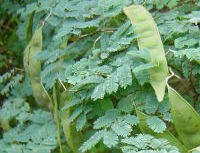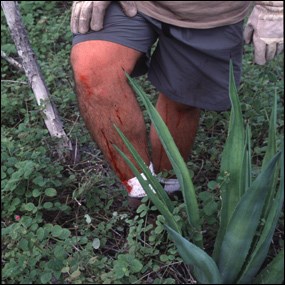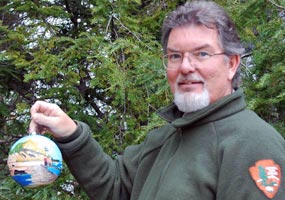Why Always Select The Very Best Tree Trimming Solution
Reasons You Need To Cut Trees Every Now And Then
Trimming is a vital part of tree care, yet it works only when it is done properly. Improper techniques could irreparably harm trees, bring about much shorter lifespans and higher risk of branch or trunk failure.
Well-pruned trees could provide years of color and satisfaction to their owners and also next-door neighbors. An excellent arborist always makes an effort to attain desired objectives while causing marginal damage to the tree.
To assist keep your trees solid and healthy, please avoid the adhering to practices:
Incorrect method: Garnish
Covering is when branches are cut off abruptly, leaving large stubs. This practice, often called "hatracking," is particularly common on Crape Myrtles, which made it the label "crape murder."
A typical misconception is that trees sometimes get also high and ought to be topped to make them safer. The lengthy term outcome of covering is to make trees much less risk-free.
It is often sensible to decrease the dimension of trees. Some types are breakable as well as tend to exhaust themselves. Pecan trees are a prime example. In addition to creating long, arching branches, they could obtain really hefty when the fall plant of nuts is at its maximum, and branches generally break under these lots.
The right means to reduce a tree's cover is to minimize branches from the ideas. By making proper trimming cuts that reduce the longest limbs, we can decrease both the weight of the branches as well best tree service companies as the amount of area that will certainly be caught by solid winds. If you visualize holding a little dumbbell or other weight, it is a lot easier to hold it near to your body compared to with your arm expanded. This very same principle applies to trees.
Getting rid of a percentage of pressure at the end of a branch makes a large distinction in what does it cost? tension acts on its whole length.
Incorrect Practice: Lion-tailing
Interior branches are not drawing anything from the tree; they are doing just the opposite. Every leaf on a tree produces power from sunlight with a procedure called photosynthesis. These stored substances assist the tree survive through demanding times, such as drought or soil compaction.

When indoor branches are removed, the tree sheds a few of its ability to produce this power. Yet there are extra needs to stay clear of lion-tailing. When all the indoor development is eliminated from a tree, the bark is all of a sudden subjected to sunshine. This could lead to sunlight scald, which commonly triggers the bark to pass away and also subjects the interior wood to degeneration. The result is weaker arm or legs that could be likely to break years later on.
Little branches sustain large branches. When all the fallen leaves as well as side branches are at the very ends of a lengthy limb, there is really little taper and the branches are a lot more vulnerable to breaking.


When indoor branches are preserved, they dampen the results of wind activity on the parent branches. Each side branch dissipates a little bit of energy, so much more side branches suggests more dampening.
Lastly, interior growth provides a chance when severe climate, mechanical damages, or some other cause does break an arm or leg. Instead of needing to make a going cut that will certainly lead to problems down the road (see "Garnish" above) or take the entire branch back to its factor of origin, we could frequently conserve component of the broken branch by cutting it back to an interior arm or leg.
So, the right means to trim a tree is to maintain as several indoor online branches as possible. We attempt not to get rid of green tissue unless it is broken, it hangs as well low over the street or walkways, or it is creating damage to frameworks below. There are exemptions (see "Garnish" above), but an excellent arborist recognizes that an effective pruning job will lead to mostly dead branches going into the chipper or brush trailer at the end of the day.
Wrong Practice: Overpruning
Continuing on that very same note, getting rid of excessive real-time tissue is bad for trees despite where it comes from. Market requirements recommend never to eliminate more than one-third of a tree's living branches in a solitary season. Prudent arborists attempt never to eliminate greater than one-fourth. When we take more than that, the tree sheds huge possible energy manufacturing and large amounts of stored energy (through starches and also sugars). At the same time, it has to expend power to seal over the countless injuries produced. All the while, the tree should remain to sustain continuing to be branches as well as roots. The tree is required to depend on kept starches and also sugars, diminishing gets. A tree that is overpruned hence becomes extra susceptible to dying as a result of outdoors stressors, such as drought, pests, or diseases.
The proper approach is to avoid removing greater than quarter of a tree's living cover in any one year. If larger amounts should be removed, it is far better to reduce the targeted arm or legs progressively over 2 or more years. When huge amounts of environment-friendly tissue need to be trimmed from a tree, it is best to wait until the tree is dormant in the wintertime, or nearly so in the summertime. After a severe decrease, a tree must be entrusted to recuperate a minimum of 2 years before any further trimming is done.
Wrong Technique: Overlifting
" Lifting" a tree's cover, likewise called "limbing up," is a necessary component of a tree's life in city settings. When reduced branches extend over a street, passing vehicles could break them off the tree, which is a lot more devastating to the tree (not to mention the car) than is a trimming cut.
Though good arborists consistently raise reduced covers, it is important to avoid doing excessive at once. An excellent general rule is that, when viewed from a distance, the lower one-third of the tree need to be stem as well as the top two-thirds need to be canopy (leaves and also branches). Having a lot more low branches is not a trouble for the tree, but having less indicates the trunk will certainly have much less taper, hence be a lot more prone to breakage (see "Lion-tailing," above). Additionally, the lost leaf location will certainly lead to diminished energy manufacturing, forcing the tree to rely upon stored power gets (see "Overpruning," over).
When low tree branches on a young tree problem with the above standards, the appropriate means to take care of the problem is to reduce the trouble branches off gradually over two or even more years. By taking completions of the reduced branches back to a lateral, we slow the growth of that branch and also the tree sends out more power to greater branches, however the reduced branch still contributes to the advancement of solid taper in the stem till it is ultimately eliminated. As greater branches establish and also take an even more leading setting in the tree, the reduced arm or legs are typically shaded out as well as die naturally, which is much less harmful to the tree.
Wrong Practice: Flush cuts
When a branch is removed from a tree, it is very important that it be done correctly. A common misconception is that we should reduce the branch as near the stem as feasible to ensure that the tree could more quickly heal the wound. Actually, this practice is ravaging to trees. When a new branch sprouts, its parent forms unique cells around its based called a branch collar. This tissue swells up around the new limb the method water in a stream swells around a big rock. Flush cuts eliminate this cells, endangering the tree's capability to grow brand-new wood over the beyond the injury. Actually, some flush cuts never completely close, exposing the indoor wood to degeneration and condition microorganisms. Typically, some cells will at some point cover the wound, but not prior to fractures have actually formed in the wood. These fractures are hidden from sight, and also often also the most effective arborists can not see the issue until years later on when the branch breaks.
The outcome will certainly differ from a small bump at the base of the cut to a short, stubby protrusion, depending on the types, the age of the branch, as well as specific genes of the tree. Leaving as well much of a stub is not a preferred practice, leaving also much is less destructive to the tree compared to not leaving sufficient. When in doubt, cut stubs a little long and wait to see exactly how the tree reacts.
Incorrect Practice: Climbing with Spikes
It used to be common for tree workers to ascend on spikes, likewise called gaffs or mountain climbers. These are metal points that band to the within the climber's boots. The mountain climber stabs them right into the wood and they enable him to tip up right into the tree. We have lots of study now to tell us this technique is really destructive to trees. Each of the access points ends up being a prospective resource of degeneration and/or illness microorganisms. In the short-term, the tree will rarely show any type of indications of damage, yet, years later, the tree could damage or die from problems related to being spiked.
The right approach of rising a tree is either to climb with a rope as well as harness, or to climb right into the cover with a ladder and afterwards install an approved rope-and-harness system. The only times when a mountain climber must rise a tree on spikes is when the tree is being gotten rid of, or when an emergency situation requires fast climb to save a damaged climber. Even lots of rescues can be executed without spikes, but a couple of circumstances may develop that would certainly make them the most effective option in an emergency situation. In all other times, spikes need to be left on the ground.